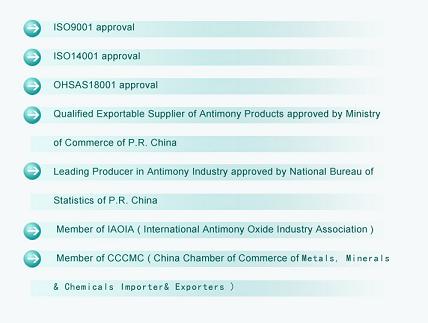Antimony market has been in decline during the week due to weak demand. Although some major smelters still hold offers of RMB40,500-41,000/t (USD5,704-5,775/t) ex works, few deals were reportedly concluded at such prices. Some dealers and consumers reported that they mananged to purchase the material at RMB39,300-39,800/t (USD5,535-5,606/t) ex works, RMB500-600/t (USD70-85/t) lower than the price seen the previous week.
Meanwhile, small smelters in Lengshuijiang, Hunan also lowered offers to a level below RMB37,000/t (USD5,211/t) VAT excluded to attract buyers. Some smelters who stocked considerable quantities of antimony ingot in February were eager to sell and reportedly close transactions at RMB36,700-36,800/t (USD5,169-5,183/t) VAT excluded for grade-one antimony ingot and RMB300-400/t (USD42-56/t) lower for standard grade-two material.
Antimony trioxide market also experienced a significant decrease in the week. The concluded prices of the material declined to RMB36,200-36,500/t (USD5,099-5,141/t) ex works from RMB36,500-37,000/t (USD5,141-5,211/t) ex works seen the previous week. As demand keeps low, producers and dealers found it even hard to sell at prices above RMB36,800/t ex works for some materials with famous brand.
The export market for antimony ingot and trioxide kept quiet. Affected by the export restrictions on antimony products, large-scale smuggling is encouraged. State-owned exporting enterprises have great difficulty in exporting antimony ingot. They have to quote as high as USD6,000/t FOB if they purchase at prices over RMB40,000/t (USD5,642/t) ex works from domestic smelters. However, overseas buyers reported that they received offers of USD5,650-5,750/t CIF Rotterdam
In line with the softening market domestically, the export price of antimony trioxide also slid down a little bit. Materials with famous brand were offered USD5,200-5,250/t FOB, USD150-200/t down compared to the previous week. Meanwhile, some traders reported that foreign buyers refused to accept their offer of RMB5,100/t (USD719/t) FOB.
**********************************************************************
Sam Xu (Suzhou office manager)
Add: 109 room.5th Unit.32nd Block Fengyi New Village,Suzhou Industrial District,Suzhou City,China.
Tel/Fax: 86-512-62573306
Mobile: 13929211059 13401441530
Http://www.jiefu.com
Blog: http://masterbatches.blogspot.com
***********************************************************************
...
Read more...





